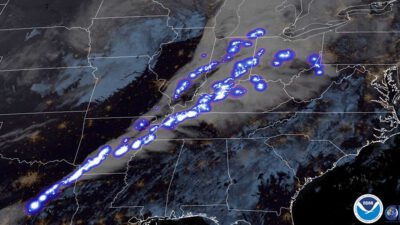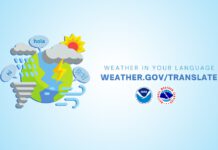
The tornadoes that ripped across the central and southern U.S. late in the evening of December 10, 2021, were notable in many ways.
The thunderstorms and tornadoes they produced traveled far — sometimes far more than 100 miles — and the impacts were widespread. NOAA’s National Weather Service has confirmed 61 tornadoes as of December 18. The very fact that tornadoes of this intensity struck in late autumn, rather than in the spring and summer when thunderstorms and tornadoes are more likely, is remarkable.
Eight states — Kentucky, Arkansas, Tennessee, Missouri, Illinois, Georgia, Ohio and Indiana — reported tornadoes that killed more than 80 people and brought devastating damage to communities.
As we gather more data about this event, NOAA scientists have answered key questions about the potential influence of climate change on tornadoes:
Can a specific tornado be linked to climate change?
Attributing a specific tornado to the effects of climate change remains challenging. However, we can say that warmer winter temperatures attributed to climate change are projected to create conditions that make tornadoes more likely.
Because less than 10% of severe thunderstorms produce tornadoes, it is difficult for scientists to draw conclusions about the processes that lead up to tornadoes and their potential connections to climate change. Additionally, there needs to be a better understanding of how certain features of the environment that contribute to tornadoes will change in the future.
How unusual are tornadoes in December?
NOAA research estimates the likelihood of a tornado occurring on a December day in the U.S. is 12-15%. By contrast, the likelihood of an early June tornado is 90%. And although they are not as common, December tornadoes can still cause significant damage. Since 1879, 22 EF-4 and EF-5category tornadoes — the most destructive — have occurred in December.
How did warmer winter temperatures contribute to this December’s tornado outbreak?
Warmer temperatures contributed to the development of thunderstorms, which were fueled by warm, moist air moving up from the Gulf of Mexico. Those storms then became tornadic because they developed in an environment where the horizontal winds from the ground up to about 20,000 feet increased significantly.
read more www.noaa.gov/news/december-2021-tornado-outbreak-explained









